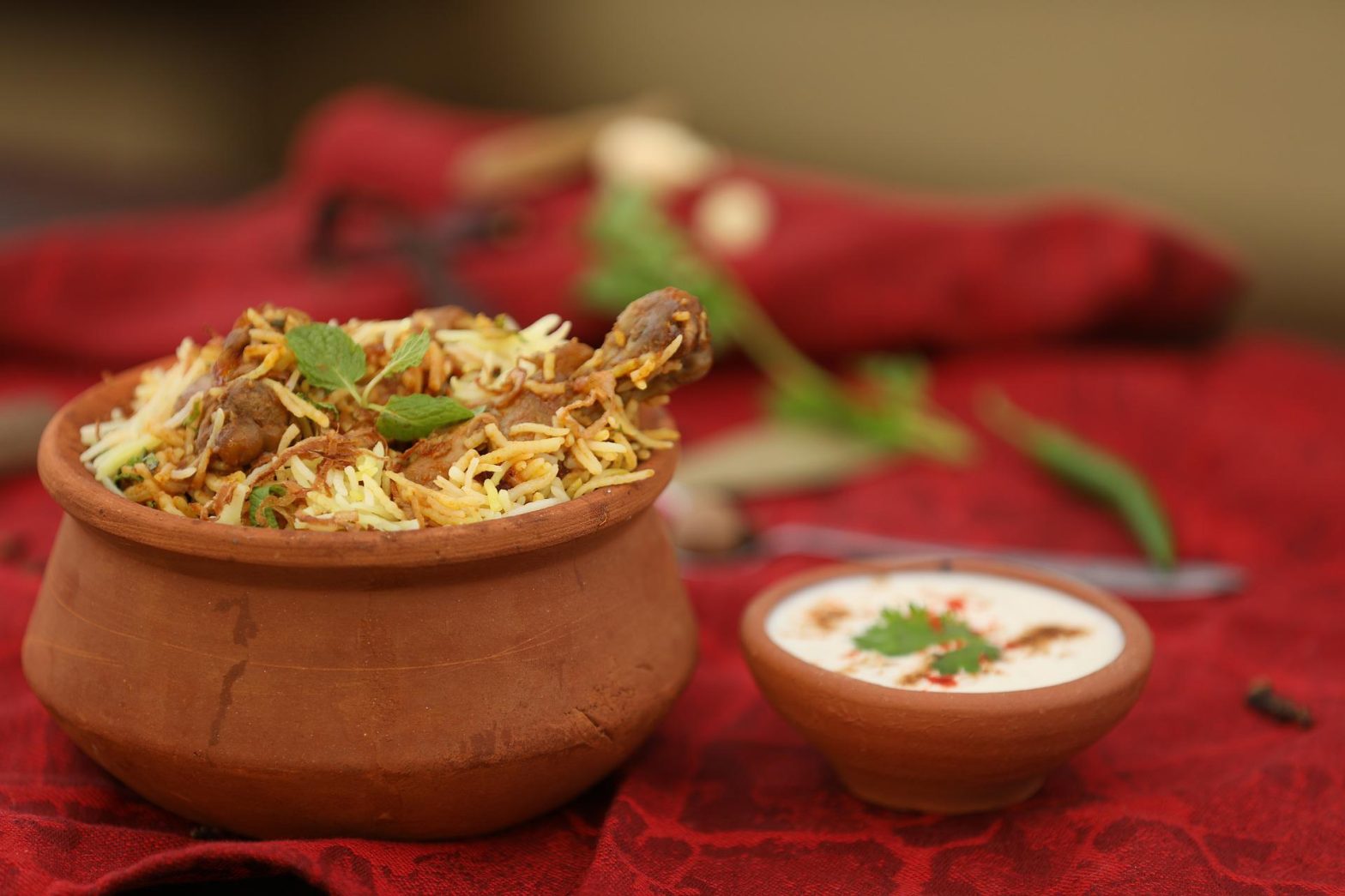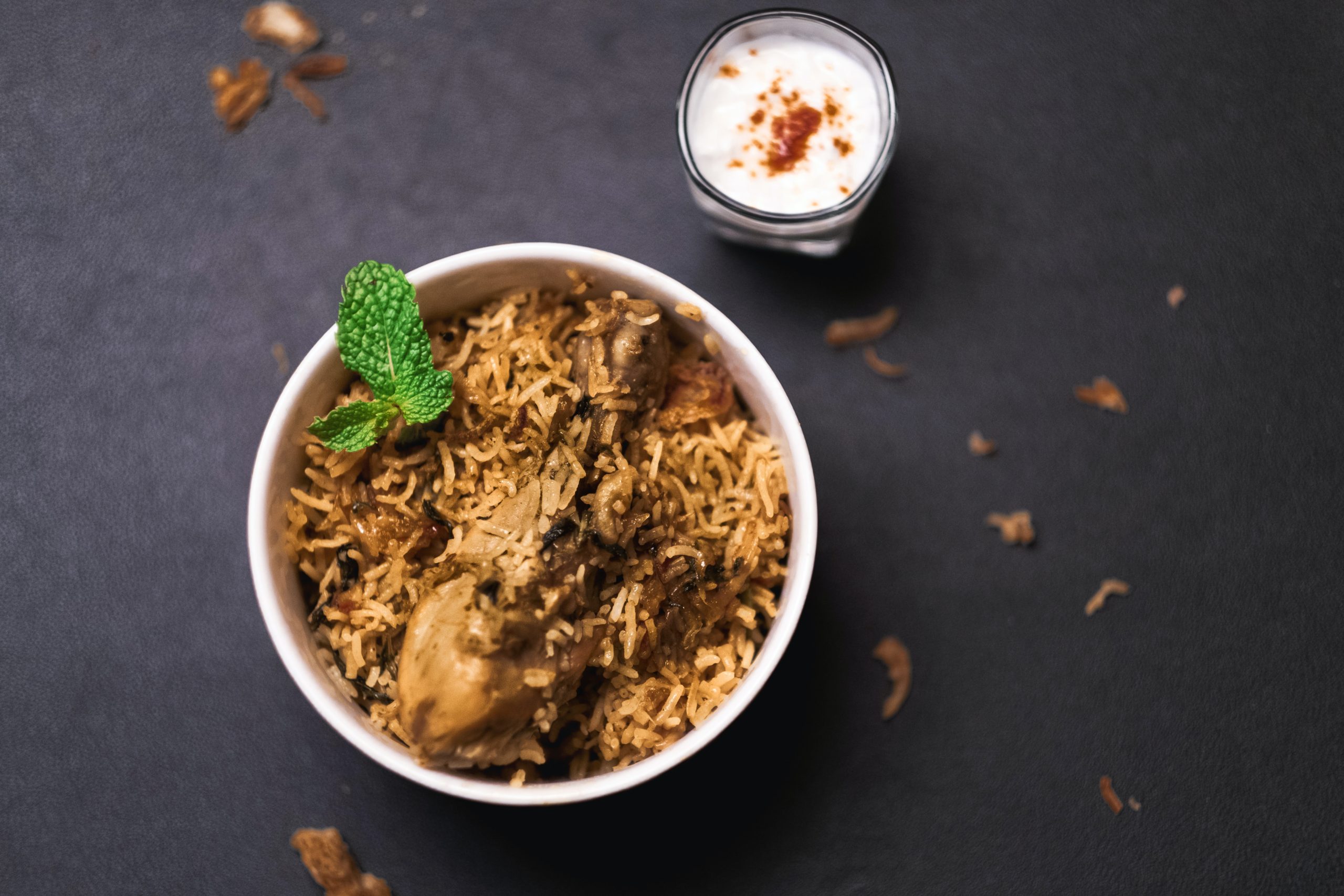Biryani ki Kahaani – Origins of Biryani

“India Pakistan ki jang mei, jeet Biryani ki hui hai” (in the war between India and Pakistan, Biryani has emerged victorious). I can still hear my grandfather’s voice echo inside my ears as he filled my plate with the Delhi Wali Zafrani Biryani and told me about his experience with the indisputable king of rice. My grandfather migrated from Delhi to Karachi during the partition and brought along with him his many stories about the food and culture that existed on the other side of the border. Listening to him recount those stories would always fascinate me since it was a chance to get a glimpse into my heritage and know where the traditions in my culture came from.
Soon, however, I noticed some parts of that history missing from my grandfather’s experiences. Even though he had numerous tales of Biryani to tell, from his visit to the famous Wahid Biryani in Lucknow to the guy serving donkey meat Biryani at a small stall in Old Delhi, he had absolutely no idea where Biryani itself, originated from. It was this missing bit of very important history that led me to the journey of researching and discovering Biryani's narrative and I am here to share it with you.
Origins of Biryani:
The term “Biryani” is derived from the Persian word “birian,” which translates to “fried before cooking.” Given these roots, one might argue that Biryani originated in Persia which is modern-day Iran. Another fascinating narrative connects the dish’s roots to Mumtaz Mahal, Emperor Shah Jahan’s wife who inspired the Taj Mahal. It is believed that when she visited the army barracks, she saw that the soldiers were malnourished. She requested that the chef develop a unique meal with meat and rice that would deliver balanced nourishment to the troops, and so the shahi Biryani was born. The meal was flavored with saffron and cooked over a wood fire.

Another tale has it that the Turk-Mongol ruler Taimur brought Biryani to India in 1398. Even the Nizams of Hyderabad and the Nawabs of Lucknow were known to enjoy this delicacy. During the Mughal period, Awadh (Lucknow) was the capital of the empire, which is where the exquisite taste of Lucknowi Biryani earned its name. When Aurangzeb became emperor, he dispatched his Nizams to Hyderabad and Arcot, where their cooks or bawarchi developed the Hyderabadi and Arcot Biryanis by incorporating local spices.

Hyderabadi Dum Biryani emerged in the 18th century as a fusion of Mughal and Iranian cuisine under the tenure of Mughal viceroy Asif Jah, also known as the Nizam of Hyderabad. His palace cooks would prepare meat in spices overnight and bathe it in yogurt before stacking it with long-grain, fragrant Basmati rice and cooking it to perfection in Dum Pukht manner in a sealed handi.
When Nawab Wajid Ali Shah was deposed in Kolkata, his cook devised the famed Kolkata Biryani by adding potatoes, which are now an essential ingredient of that region’s Biryani. Tehri Biryani, a meatless variation of the meal, is thought to have been invented during this time period as nourishment for Hindu court bookkeepers who refused to eat meat Biryani. Other variations of Biryani seem to have popped up as the delicacy traveled the subcontinent and each region applied a bit of its own taste palette to the dish.

Once reserved for royalty, Biryani now reflects local views and traditions and is a popular and widely consumed meal. While the origins of Biryani seem to be disputed within different cultures, the love for the delicacy remains constant throughout with Mughal Biryani ways still prevailing in regions where their empire had a presence. With 1947’s partition and the mass migration of people over large areas of land, the variations of Biryani traveled across the subcontinent to come together and give birth to even more versions. All this research has now made me comprehend why my grandfather used to call Biryani, the victor of the war. The delicacy had managed to evolve and mature even in times of turmoil and had brought people together when they would have been struggling to find common grounds.
